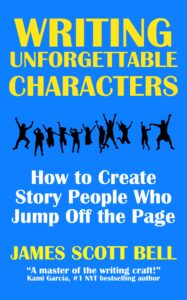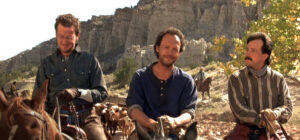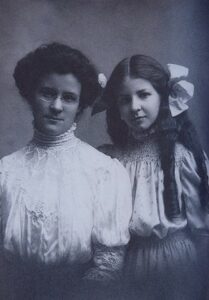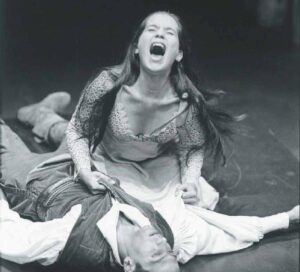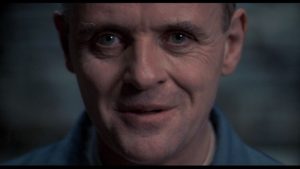By SUE COLETTA
Tiny Creatures is a new docuseries on Netflix that’s adorable, suspenseful, and masterfully plotted and paced. To check it out I skipped ahead to Episode 6, which features a raven and a rat. And the storytelling craft blew me away. This episode, along with all the others in the series, provide a detailed roadmap driven by obstacles, misdirection, and conflict. Let’s pull back the curtain and peek behind the scenes.
Even with the “Spoiler Alerts” I still recommend watching the episode. I’ve only concentrated on a few areas of craft, and I don’t point out every instance of where it occurs. The full post still landed at 4564 words. Hence why I’ve broken the post into two parts. See what can happen when you’re high on craft? 😉
Before we get to the deconstruction, check out the trailer.
Deconstruction Part I
“Florida, home to the Everglades. A wild expanse of almost two million acres of wetlands.” (We know where we are, but there’s also a hint of mystery and intrigue. What creatures lurk in the Everglades? And that, is the Central Dramatic Story Question—the cornerstone question at the heart of every story that directly relates to the hero’s conflict. Boom! The writer raised the most important question in the first two lines of the script. Notice s/he never outright poses the question. Rather, s/he implants it in the viewer’s mind.) “Isolated among the Everglades stands a fishing shack, the backdrop of two very different animals whose stories are destined to cross.” (There’s the hook. We need to continue to find out where this leads.)
In flies an impressive raven. (Is he our villain or hero? We’ll keep watching to find out.)
“A raven, a sleek bird with glossy black feathers. Behind this polished appearance, the raven possesses intellect as well as beauty.” The camera zooms in on his size and power (hints that he must be the bad guy). “Lately, the raven’s been keeping an eye on this fishing shack, tracking the movements of the human owner, their habits and routine. He knows when the coast will be clear.”
The raven struts into the fishing shack.
“Ravens are quirky characters and this one is keen to explore. (quirky = surface trait = 1st Dimension of Character) His eyesight, however, isn’t as sharp as his mind (character flaw). He can’t see well in the dark. (obstacle) But this bird is a problem-solver and he has the perfect solution.”
The raven tugs on the wooden knob of the shade, and the shade rolls up. Cascading sunlight bathes the fishing shack in brightness.
“As smart as a chimpanzee, ravens frequently use their brains to exploit the riches of others. Especially humans. (Notice the word choices; the harsh “exploit” and staccato “especially humans” indicates he’s the villain) And this person has many treasures hidden away, safely out of reach.”
The raven flies over to a tackle box.
“But for the raven this is a test of his wits.” (Tension builds) Raven struggles to break into the tackle box (conflict). “And he does what ravens do best—he improvises.” (problem-solver = psychological trait stemming from past experience, upbringing, emotional scars, memories, etc. = 2nd Dimension of Character. We’re beginning to better understand the raven.)
Using a hook-shaped tool, the raven breaks into the tackle box to get at some sort of bait scattered across the bottom of the middle drawer. Clearly, the raven is burglarizing this shack to suit he needs. (Burglar = antagonist. Or could he be an anti-hero? We’re still not sure, which forces us to keep watching.)
Camera pans out to the Everglades and the narrator offers more details about the area. “The water is also home to an assortment of wildlife. Unlike the raven, some animals strive for a simple existence.” (A sprinkle of backstory. More importantly, this is the setup to introduce our tiny hero).
Enter stage left: an adorable rat doggy paddles across the water. (cuteness = surface trait = 1st Dimension of Character)
(Side note: If you’re not a lover of rats, I get it. I wasn’t either. But by the end of this story, you will fall in love with this little rat. And that, ladies and gents, is what characterization is all about.)
“After a busy night exploring, this drowned rat is traveling home to rest (relatable + we empathize with our tiny hero). Each night she swims from bank to bank to see what she can forage. Just like humans, not all rats are natural swimmers (our hero has a superpower). Those rats who have mastered the art can swim over a mile in one go. With her small frame and streamlined body, she’s a natural, moving effortlessly through the water.” (What other superpowers might she possess? Curiosity and empathy keeps us watching.)
Our tiny hero reaches a drainpipe and climbs inside.
“This is a familiar and safe route. Not many predators can follow her through these narrow tunnels. It was her swimming agility which brought her to this hidden route to her home.” (backstory dribbled in to drive the plot) Our tiny hero crawls farther through the drainpipe. “A light at the end of the tunnel signifies her final hurdle.” <cue dramatic music> She plunges into a U-shaped drain (tension builds). “One that relies on her ability to hold her breath and stay submerged for up to three minutes.” (determination = psychological trait = 2nd Dimension of Character) “A rather unconventional way of entering her home in the fishing shack.” (setup of 2nd Pinch Point)
Up pops our tiny hero from the toilet.
“Now soaked to the bone, she carries an extra 5% of her body weight in water. If her fur stays wet for too long, she’s at risk for hyperthermia. (more conflict + character flaw) Using the equivalent of nature’s hairdryer to dry off, she adopts an alternative approach.”
<cue dramatic music and slow-motion camera> Our tiny hero twists and shakes her body 18 times per second, loose water spraying in all directions.
“It’s an efficient if not slightly messy approach. Within just four seconds, she’s removed 70% of the water droplets.” She climbs down off the toilet seat and into the main room of the fishing shack. “Unbeknown to the rat, however, there’s a trespasser inside her home.” (First hint of trouble.) <cue dangerous music as the camera narrows on the raven> “And the normal serenity of the shack is swiftly broken.” (Inciting Incident)
Wings outstretched, the raven squawks.
“The presence of the rat irritates the raven. He could easily kill this rodent. But he has other ideas.” (Because we’ve bonded with our hero — the under-rat, if you will — we fear for her safety. There’s no way we’ll stop watching.) Loud screeches from the raven combined with a penetrating glare startle our tiny hero. “Ravens are one of the few bird species that like to play. And the rat is the unfortunate victim of its game . . . and her tale is a tempting target.”
Raven swan-dives off a nearby table—straight at our hero. The chase is on! (1st Plot Point lands at 20-25% — perfect)
<dramatic music enhances the terror> “Fleeing this terrifying predator, the rat seeks sanctuary where she can.” Each time the raven misses our hero by mere millimeters. Camera closes in on the raven’s opened beak, massive black wings, and powerful physique. “This game is a little one-sided.” (And now, we’re certain Raven is the formidable villain.)
Our tiny hero scampers into a hole in the side of a cardboard box. “The raven uses its sharp beak to poke and probe.” (Notice the hard-sounding word choices “poke” & “probe” which only solidifies our theory about the raven) Raven leaps on top of the box, tears at the old packing tape. (Stakes are raised. If our hero doesn’t escape, she could die!)
“But the rat’s size and agility gives her the edge into some unusual terrain. She ceases her opportunity and makes a dash for it. She squeezes through a one-inch gap, leaving the raven still pecking.”
When our tiny hero races across the floor, Raven is right on her heels. But in the mad dash he knocks over a bottle. Liquid leaks out its spout (foreshadows danger + setup of climax).
“Distracted by the chase, the raven loses track of time.”
Outside the shack, a boat docks at the pier. “The fisherman arrives back at the shack, seeking shelter from the midday sun. But for some, the heat of the sun’s rays are welcome to warm, cold blood.” A menacing-looking iguana sunbathes atop a large rock on the porch, and we learn more about him, including his voracious appetite. (This spattering of backstory raises the stakes even higher while conjuring more story questions: Will our hero need to fight the iguana, too?)
Camera cuts back to the raven whose sharp talons pin down a burlap sack. Underneath, our tiny hero struggles to break free.
“The fisherman returns from a long but successful day on the water.” He unloads his gear and clomps toward the front door. “He is unaware of the raven’s game that is still taking place in the shack.”
Cameras cuts back to inside, where our hero whimpers as she tries to flee from the massive raven. (Conflict, tension, action, and rising stakes, combined with rotating motivation/reaction units, along with solid characterization and story questions—questions that must be answered—and the viewer’s breathless with anticipation. We cannot look away.)
“The noise of the fisherman alerts the raven. Realizing the human has returned, the game with the rat is no longer of interest to him”—he soars toward the window— “as the raven spots a more appealing opportunity outside.”
Camera zooms in on bait in a three-gallon bucket.
“Luckily, the pause in the chase allows the rat to escape to her bed.” Our tiny hero careens into an old boot (allowing viewers a moment to catch their breath = smart pacing).
“For the raven, it seems there are bigger fish to fry.”
Camera captures the raven lickin’ his chops as he stares out the window at the bucket (menacing appearance = surface trait = 1st Dimension of Character). Raven climbs out the window and stalks the ledge to the front corner of the fishing shack. When the fisherman enters the shack, he seizes the opportunity to raid the bait.
While we watch the raven feast, the narrator offers us a few more fascinating details. “With no teeth, the raven pecks at the food, swallowing whole the more manageable pieces.” (These tidbits allow us to better understand the raven, and to envision what he might do to our sweet hero.)
Little Miss Rat emerges from the boot. The camera flashes outside to the iguana, increasing the tension of the scene. Our tiny hero could be up against two villains! (raises the stakes even higher)
“Capable of smelling food from a mile away, the scent of fish entices the rat to leave her hiding place. Similar to ravens, rats are not choosy to what they eat (similar character flaws). There’s more than enough food here for both of them.”
Our innocent hero totters up to the bait bucket. Glowering, Raven towers the rat, his talons latched onto the rim.
“Though still leery of the raven, she hopes this distraction will allow her to break cover and grab a quick bite, unnoticed. But the beady-eyed raven hasn’t learned the art of sharing.”
Raven squawks (motivation), which wakes the sleeping iguana (reaction). Our tiny hero runs and hides, leaving the two bad guys to square off. (tension mounts)
“Woken by the commotion from the raven, this sensitive lizard doesn’t hesitate. Its instinctive reaction is to run.” But when the iguana charges (motivation), the raven leaps off the bucket (reaction) and the bait splatters across the porch. The iguana escapes into the surrounding landscape. “In a flash, it’s gone.”
But the fisherman hears the crash from inside and peers out the window. Raven makes a mad dash to gobble up as much bait as he can swallow.
The narrator hits us with this as a clever misdirect: “Ravens can learn to either like or dislike a person, depending on how they’re treated. And they never forget a face.”
Da, nah, nah. <cue dangerous music>
The fisherman storms outside with a broom. (Now it looks like the human might be the real antagonist of the story. Is the raven an anti-hero? But if that’s true, then why does he keep tormenting an innocent rat? Raising story questions forces us to keep watching.)
Broom in hand, the fisherman chases the raven across the porch, screaming and yelling, and we watch this play out in silhouette through the window (1st Pinch Point, perfectly placed at 37.5%).
With the raven gone, our tiny hero can finally rest. <cue sweet music>
“Both the rat and the raven are blissfully unaware of the danger being constructed outside (This line subtly signals that they are, in fact, dual protagonists). Humans also hold grudges. And the raven’s actions have consequences.” (The fisherman sure looks like the real villain now, doesn’t he? Just when one answer is revealed, the writer raises another story question. How will the human punish the raven?)
On the porch sits a wired trap baited with fish. Our tiny hero is sleeping soundly in her boot when she’s awakened by the raven screeching outside.
“Trapped and outsmarted by the fisherman, the raven calls for help.” Poor Raven is caught in the trap (gaining empathy for our anti-hero).
The camera pans over to our sweet rat emerging from the safety of her bed.
“A social animal, the rat can sense the raven’s distress. Unnerved by the calls for help, her instinct draws her to the raven. (instinct = inner trait = 2nd Dimension of Character) Arriving to see the trapped bird, a sense of empathy washes over the rat. (compassion = inner trait = 2nd Dimension of Character) She approaches cautiously. She has not forgotten the raven’s torment yesterday.”
The raven and the rat gaze into each other’s eyes (this Mirror Moment bonds the two heroes).
Camera closes in on our tiny hero’s sweet face. “Her sense of compassion overrides her concern.” In a bold move, she climbs up on the door of the trap and gnaws on the rope securing the top of the door to the metal bars (the act of facing her fears = 3rd Dimension of character, her true character). “Equipped with super strong teeth, rats are capable of chewing through concrete, glass, and even metal. Although not quite as a clever as the raven, rats are super smart. (yes, the repetition is a writing tic, but it’s invisible to the viewer due to the high tension & action. See what good plotting and three-dimensional characters can mask?) Unsure of when the fisherman will return, the rat works as quickly as she can to gnaw through the rope.”
The rope falls to the deck boards and our tiny hero drags open the door, freeing the raven. <cue dramatic music> (Midpoint Shift, perfectly placed at 50%.)
Raven cocks his head and stares at the rat. “The raven is puzzled by the rat’s action, but grateful nonetheless.” He leaps into the sky. (story question: will they meet again?)
The fisherman returns from an early morning outing, and the raven calls out to warn the rat to get out of sight (his actions/behavior = 3rd Dimension of Character, his true character). Our tiny hero scurries back into the shack as the fisherman examines his busted trap on the front porch.
As our tiny hero curls into her boot home, the camera pans out to the surrounding area. “The Everglades are home to many animals.” Camera closes in on an alligator. “The American alligator is a keystone species crucial to the health and wellbeing of the ecosystem.” (red herring to get our blood pumping—more tension builds + more story questions. Will our heroes soon face this beast?)
Of special note for Part I: Through characterization, did you notice how the writer periodically forced the viewer (reader) to change their perception of the hero, anti-hero, and almost every villain we’ve encountered so far? Storytelling at its finest, folks.
Stay tuned for Part II on Monday, Aug. 24.
Have you watched Tiny Creatures on Netflix?

